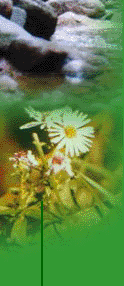Comrie
As midnight strikes on Hogmanay in Comrie a strange, time-honoured ceremony takes place - the lighting of the Flambeaux,
to herald in the New Year. It is a ceremony that goes back far beyond the memory of folk and when questioned about its origin,
they say "There have aye been flambeaux, in my father's time and my granfather's".
The flambeaux are great tall torches, some ten feet in length, swathed for about two feet on top. The poles are usually
smallish birch trees which are cut around October. The swathing is of canvas formly bound to the shaft with wire, and is subjected
to being soaked in a large barrel of paraffin for several weeks.
On Hogmanay night they are brought out and laid against the dyke at the northeast corner of the Auld Kirkyaird, and when
the clock strikes at midnight they are set alight. The torches are then seized by the strongest young men and hoisted shoulder
high. Preceded by the Comrie Pipe band followed by a procession of people gathered in the village square they are paraded
down Drummond Street, back over the Dalginross Bridge and down Strowan Road to the Square, then along Dunira Street to the
Public Hall in Burrell street and finally returning to the Square. Once there they are ceremoniously thrown into the river
Earn. It takes strong men to complete the circuit and no shortage of volunteers.
A motley collection of guisers and people in fancy dress add to the ambiance and there is dancing and laughter. Prizes
are awarded for the best costumes.
Therafter people first foot their family, friends and neighbours. It is important that a dark - haired "stranger" be allowed
into your house before a fair haired one - this may have something to do with Viking raids - invariably Vikings were fair
haired. The "stranger" may carry a lump of coal signifying warmth or heat, or a piece of cake signifying food or Scotch signifying
liquid. A good time is then had by all and sundry. No-one is turned away at the door.
The ceremony may be Druid - to exorcise the witches because people until very recently believed in witches or it may have
something to do with protecting the village from marauding Vikings or it may have something to do with the Flems who came
there 200 years ago and taught the local folk how to weave. (Flambeaux = beautiful flames)
Burghead and Stonehaven
The fire festivals are typical of those which used to be held in many communities in Scotland, but which were largely stamped
out
by the Church of Scotland in the 16th and 17th centuries. A few survived, such as the Burning of the Clavie at Burghead
(Moray), and the fireball whirling at Stonehaven. These days they are often an excuse for the public to consume various quantities
of appropriate alcoholic beverages. The Clavie fire ceremony is conducted under strict accordance with tradition and takes
place around January 1st by the old calendar, which equates to January 10th/11th.
The Clavie is dated back to pre-Christian times and is held in the highest regard by the people of Burghead, more than
Xmas and January 1st itself. A position in the Clavie crew (the organisers) is hereditary, and has been handed down from father
to son for many generations. (I wonder if any women have ever wanted to take part?) A barrel is halved and filled with tar
and faggots, mounted on a pole and carried round the streets of the town, with burning bits of wood tossed into doorways where
they are snapped up by the joyous householders and preserved to bring good fortune throughout the year. They used to take
the clavie round ships in the harbour, but after a few accidents this practice ceased. The clavie is finally mounted in a
special pillar on a mound within the Pictish fort, where it burns itself out. Similar ceremonies used to occur at other Moray
fishing villages, including Findhorn and Lossiemouth, but this was stamped out by the church in the 17th century. Burghead
didn't have a church until the mid-19th century, so it survived there.
Shetland
Shetland has a similar fire festival in January "Up helly aa" - this is a series of fire festivals. The biggest takes place
on the last Tuesday in January and is a procession of flaming torches, carried through the streets of Lerwick by 'guizers'
and led by the Jarl Squad in full Viking costume, before setting alight a specially built full-size replica longship. Smaller
festivals are held throughout Shetland from January to March, these are more accessible but still very spectacular.



